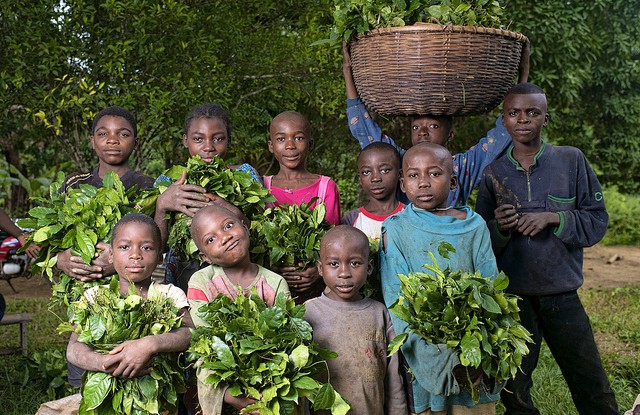
Although Cameroon has benefitted from sustainable forest management in the past 20 years and has a relatively well-preserved forest cover today, its forests are under increased pressure due to expanding agro-industrial exploitation, shifting cultivation, infrastructure construction and logging.
A recently published study aims to provide an updated estimate of the economic benefits of forest resources in Cameroon to inform policymakers on the financial advantages of forest management and the opportunity costs of deforestation.
The International Forestry Review published this Special Issue, which was launched at the 16th meeting of the Congo Basin Forest Partnership on 22 November 2016 in Kigali. It is also being officially introduced to the Cameroonian partners in the capital of Yaoundé on January 25.
The valuation of forest products is essential to improve the design and implementation of public policies for sustainable development and poverty alleviation, in the perspective of an inclusive green economy.
The current lack of information on the value of subsistence and informal cash revenues from forests has led to an overemphasis on forest governance of products, such as timber, that are visible highly and contains a high market value.
However, the focus on industrial exploitation of timber has obscured other forms of income derived from forest resources and has downgraded the perceived economic value of forests. Such a perception of forest uses and benefits creates an information asymmetry that poses bias to policymakers’ knowledge for rational policy hierarchy-setting in relation to the allocation of land uses.
What does the valuation of the current use of forest resources in Cameroon reveal?
First, and not surprisingly, the industrial timber sector holds the highest value. The fuelwood sector also has a significant value, although it remains largely informal. Non-timber forest products (NTFP), chainsaw milling (picture 2) and hunting each contributed around 0.2 percent to Cameroonian GDP (without the inclusion of oil) in 2013. In contrast, sport hunting and tourism have a negligible contribution to the country’s GDP.
However, it is noteworthy that the contribution to GDP is not a significant indicator of employment. There are many more people involved in the hunting, fuelwood, chainsaw milling and NTFP sectors than in the formal sectors, although these jobs are seldom comparable in terms of time spent, working conditions, and social protection.
KEY RECOMMENDATIONS
The results presented in this Special Issue suggest the need for three approaches to research and action to improve the sustainable management of forest resources in the Congo Basin countries.
First, there is a need to recognize the importance of domestic consumption of forest products in the development of forest policy. It is being largely ignored in the current forestry policy even though an overwhelming majority of rural people are producing forest goods consumed by the majority of Cameroonians. In this context, international conventions covering carbon sequestration, biodiversity protection and timber legality have had a negligible impact on cash incomes from forest revenues. Instead, the achievement of sustainable forest management depends largely on domestic markets for forest products and on commodities – especially agricultural and mineral – produced in and often to the detriment of forest areas.
Second, the procedures to integrate informal uses of forest resources in national accounts can be improved. The comparison of macroeconomic estimates of forest-related activities in national accounts with our assessments of sub-sector analyses indicates a significant under-valuation of the economic benefits derived from forest resources in official statistics. Two main reasons can explain this difference. First, the classifications used in public accounting are poorly suited to assess and analyze the diversity of forest resources. Moreover, this failure is due both to the low frequency of surveys and the nature of surveys used, which are often inappropriate to capture the value and extent of highly sensitive, illegal forest activities.
Finally, the information on the uses of forest resources in Cameroon – and across Central Africa – should be more easily accessible. Mechanisms to systematically collect, verify and publicize this information have long been proposed and urgently need to be developed.
The current lack of information on the value of subsistence and informal cash revenues from forests has led to an overemphasis on forest governance of products, such as timber. The focus on industrial exploitation of timber has obscured other forms of income derived from forest resources and has downgraded the perceived economic value of forests.
A better dissemination of such data would contribute to show that forests have a far greater economic value beyond timber logging, and could be used to prevent the increasing pressures of forest conversion to other land uses. Valuing forest resources can also help to clarify and optimize the interactions between complementary and competing uses of forest resources, and to make a transition from informal exploitation of forest resources to sustainable and legal harvest and trade.
Cameroon possesses tremendous forest resources, but its forest policy needs to be revised urgently in order for its potential to be realized. If this can be achieved, the development of an inclusive green economy will be closer than ever.
We want you to share Forests News content, which is licensed under Creative Commons Attribution-NonCommercial-ShareAlike 4.0 International (CC BY-NC-SA 4.0). This means you are free to redistribute our material for non-commercial purposes. All we ask is that you give Forests News appropriate credit and link to the original Forests News content, indicate if changes were made, and distribute your contributions under the same Creative Commons license. You must notify Forests News if you repost, reprint or reuse our materials by contacting forestsnews@cifor-icraf.org.
